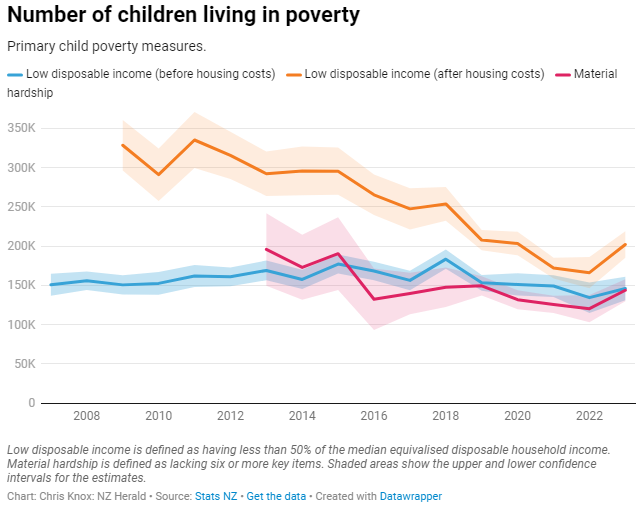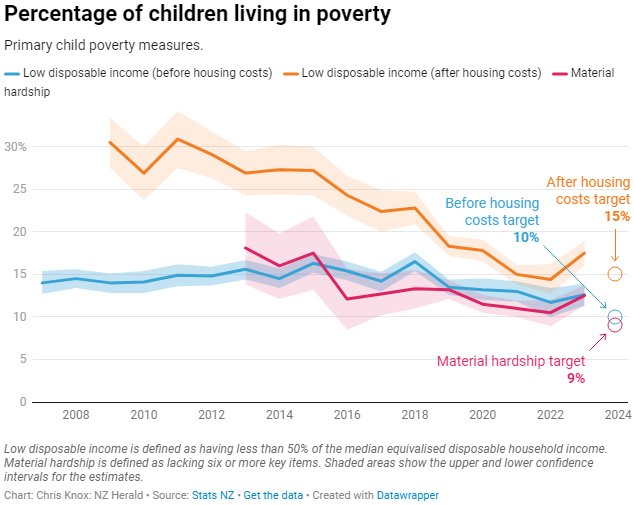
The data release from Statistics NZ today showed increases in the three primary metrics used to measure poverty in the year to June 2023 compared with the year to June 2022, however, they hadn’t exceeded levels from 2018 when child poverty reduction targets were introduced.
On children in poverty after housing costs, there was a 3.1 percentage point increase to 17.5 per cent in the year to June, up from 14.4 per cent in the previous year - translating to one in every six children living in poverty under that measure. This was an increase from 166,200 to 202,100 children.
There was also an increase in children living in households experiencing material hardship, meaning they went went basic needs such as fresh fruit and vegetables, doctor visits and putting up with being sick.
In the year to June 2023, 143,700 children - roughly one in every eight - were considered to be living in material hardship, up from 120,300 which was an increase of two percentage points.

Material hardship felt by tamariki Māori was higher compared to the total population, with one in five experiencing material hardship. It was also higher for Pasifika children with one in four experiencing material hardship.
In March last year, the most recent data at the time showed there were nearly 120,000 Kiwi children struggling to get by. Overall, the number of children in child poverty had trended down slightly in the year to June 2022, continuing an overall gradual decrease in eight of the nine measures since.
Since 2018, there were 77,000 children living in poverty after housing costs were factored in, and 28,700 fewer children experiencing material hardship.

• Reduction in the before-housing-costs measure from 16.5 to 10 per cent – lifting around 70,000 children out of poverty
• Reduction in the after-housing-costs measure from 22.8 to 15 per cent – lifting around 80,000 children out of poverty
• Reduction in the number of children experiencing material hardship from 13.3 to 9 per cent – lifting around 40,000 children out of hardship











